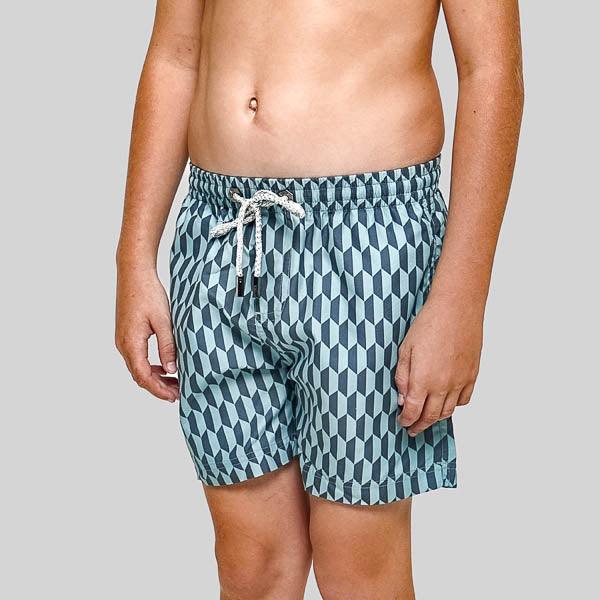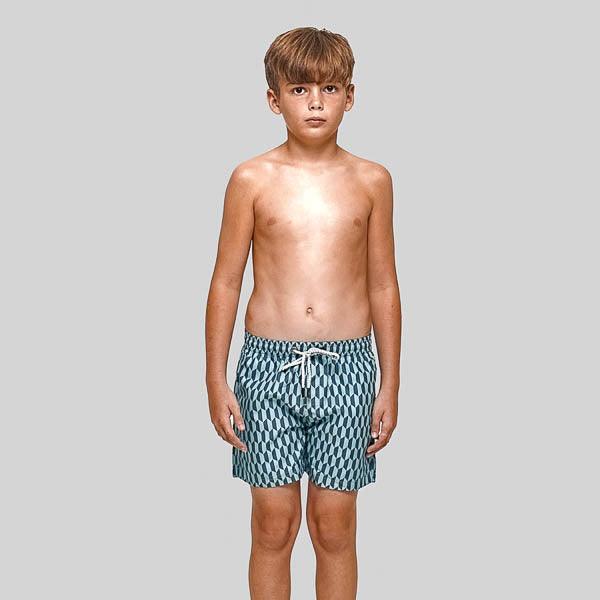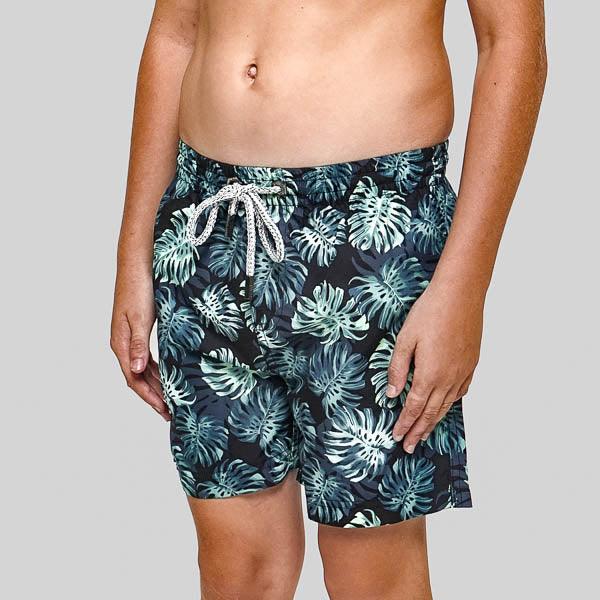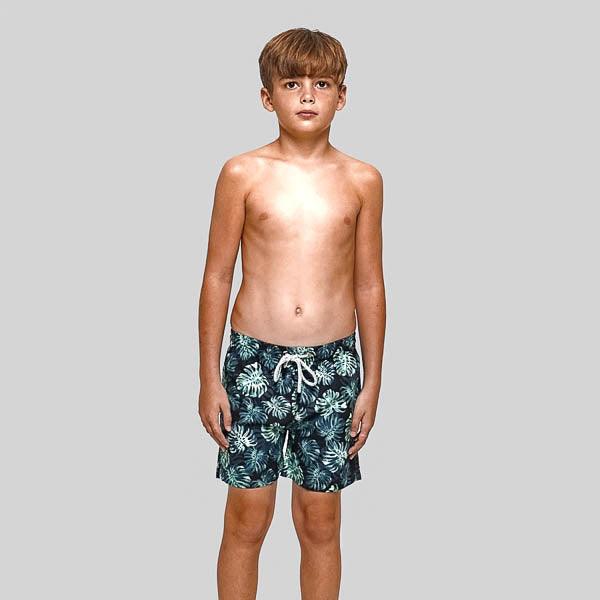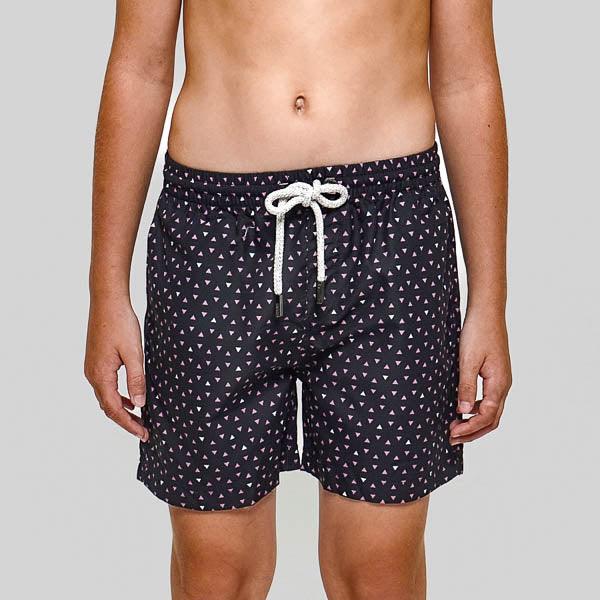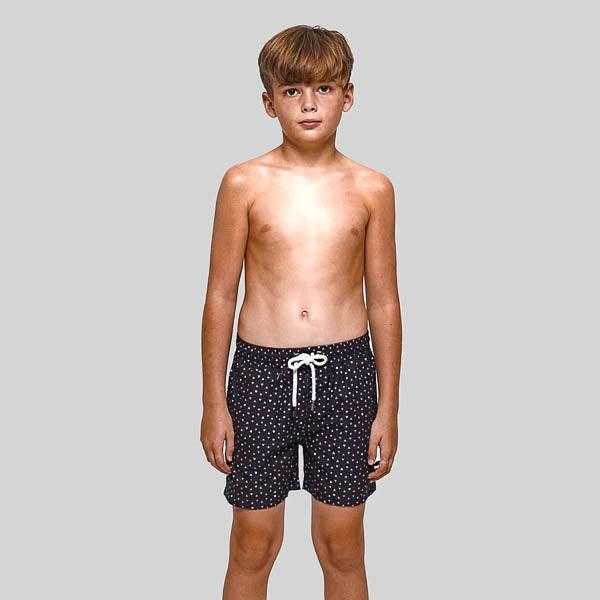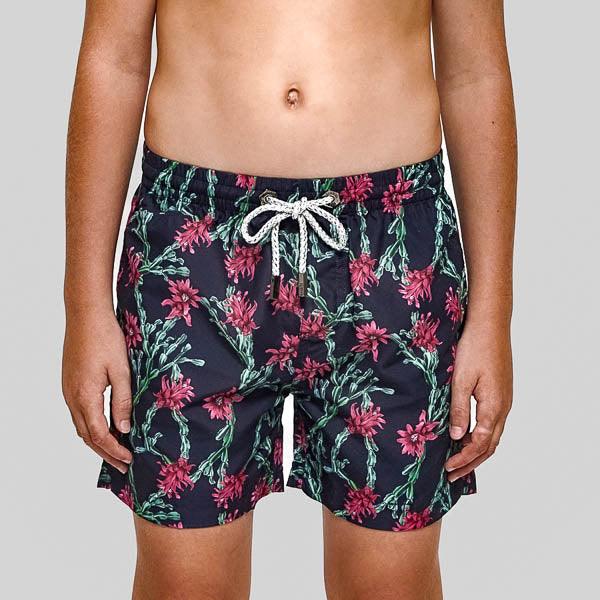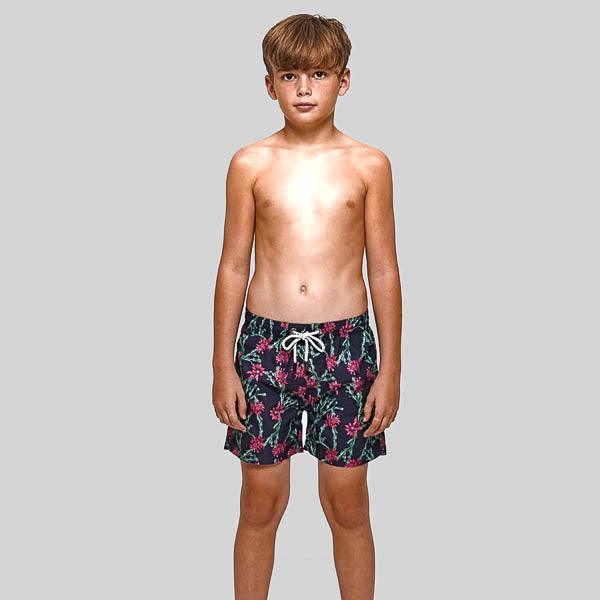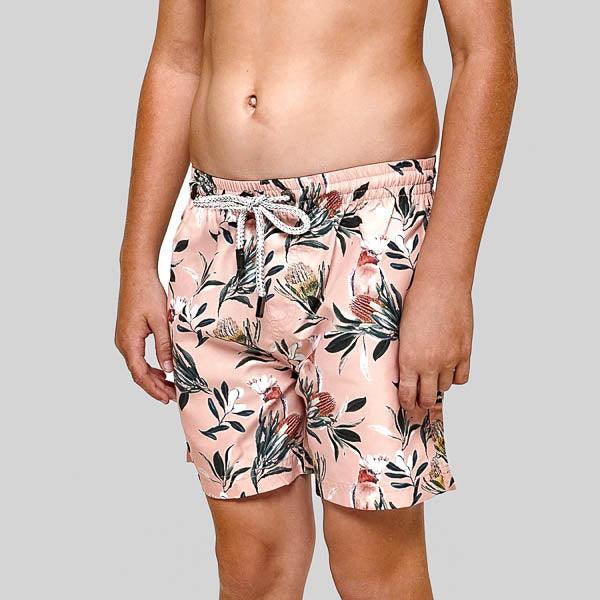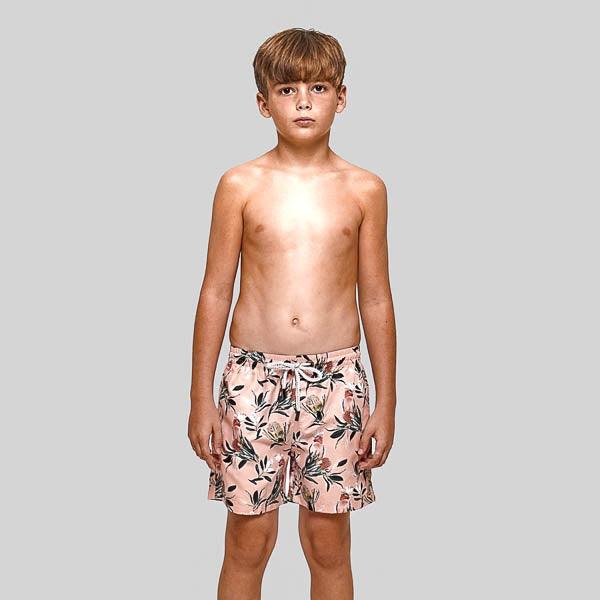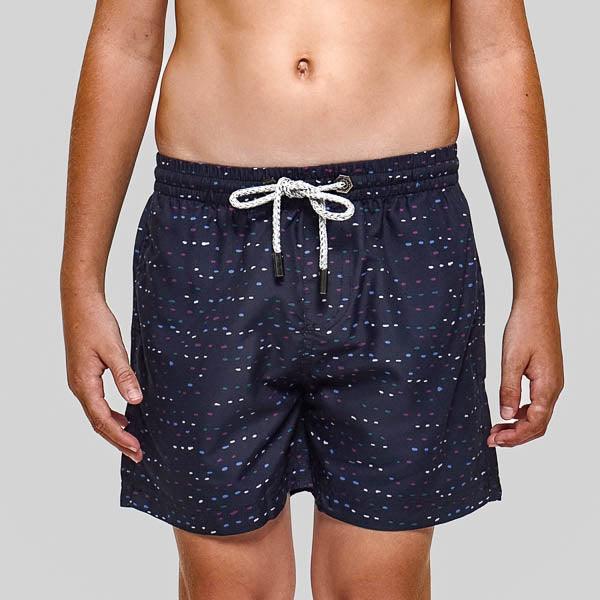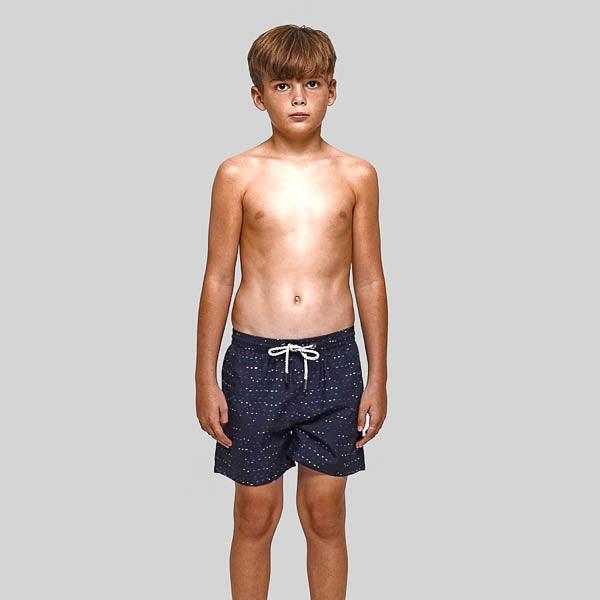Choosing the right swimwear for boys can be a daunting task, especially with the variety of styles available. Each style offers different benefits and is suitable for different activities. This guide will help you understand the various boys' swimwear styles, making it easier to select the perfect swimwear for your child.
1. Board Shorts
Overview
Board shorts are a popular swimwear style known for their longer length and relaxed fit. They were originally designed for surfers but have become a favorite for all kinds of beach and pool activities.
Key Features
- Length: Typically, board shorts extend to the knee or just above.
- Waistband: Often features a lace-up front and sometimes an elastic back.
- Pockets: Many have pockets, sometimes with drainage holes.
Pros and Cons
Pros:
- Excellent coverage and protection.
- Versatile for both water and land activities.
- Stylish and often come in various vibrant patterns.
Cons:
- May be too long or bulky for some children.
- Lack of built-in lining can be less supportive.
2. Swim Trunks
Overview
Swim trunks are the most common type of boys' swimwear. They are shorter than board shorts and offer a comfortable fit with an elastic waistband. Bondi Joe's range of boys swim trunks are a great example of this style.
Key Features
- Length: Mid-thigh length, although variations exist.
- Waistband: Elastic waistband, often with a drawstring for adjustment.
- Lining: Usually includes a mesh lining for support.
Pros and Cons
Pros:
- Versatile and suitable for most water activities.
- Comfortable and easy to wear.
- Quick-drying fabrics.
Cons:
- Less coverage compared to board shorts.
- Elastic waistband might not fit all body types perfectly.
3. Swim Briefs
Overview
Swim briefs offer minimal coverage and are similar to underwear in design. They are popular among competitive swimmers due to their streamlined fit.
Key Features
- Length: High-cut legs with minimal coverage.
- Fit: Snug and supportive fit.
- Design: Often comes with a drawstring waistband for secure fitting.
Pros and Cons
Pros:
- Maximum freedom of movement.
- Minimal drag in the water, ideal for competitive swimming.
- Quick-drying and supportive.
Cons:
- Less coverage, which may not be suitable for all children.
- Can be less comfortable for casual wear.
4. Jammers
Overview
Jammers are similar to swim briefs but offer more coverage, extending down to the knees. They are also popular among competitive swimmers.
Key Features
- Length: Extends to the knee.
- Fit: Tight and supportive, similar to cycling shorts.
- Fabric: Often made from chlorine-resistant materials.
Pros and Cons
Pros:
- Great for competitive swimming and training.
- Provides more coverage and protection.
- Reduces drag and enhances performance in the water.
Cons:
- Tight fit may not be comfortable for all-day wear.
- Limited to more athletic activities.
5. Rash Guards
Overview
Rash guards are not swimwear per se but are often worn with swim trunks or board shorts. They provide additional coverage and protection from the sun and abrasions.
Key Features
- Design: Long or short sleeves with a fitted design.
- Material: Usually made from quick-drying, UV-protective fabric.
- Purpose: Provides sun protection and reduces skin irritation.
Pros and Cons
Pros:
- Excellent UV protection.
- Protects against rashes and abrasions.
- Versatile and can be worn for various water sports.
Cons:
- Not a standalone swimwear piece.
- Can be restrictive if too tight.
6. One-Piece Swimsuits
Overview
While more common for girls, one-piece swimsuits are also available for boys, particularly younger children. They offer full coverage and are easy to wear.
Key Features
- Design: Single piece covering the torso.
- Fit: Comfortable and secure.
- Purpose: Provides full coverage and protection.
Pros and Cons
Pros:
- Full coverage offers maximum protection.
- Stays in place during active play.
- Easy to put on and take off.
Cons:
- Limited to younger children or specific activities.
- May be too restrictive for older boys.
7. Hybrid Shorts
Overview
Hybrid shorts combine the features of board shorts and casual shorts. They are designed for versatility, allowing boys to transition from water activities to casual wear effortlessly.
Key Features
- Design: Looks like casual shorts but made from quick-drying fabric.
- Length: Typically mid-thigh to knee length.
- Functionality: Suitable for both water and land activities.
Pros and Cons
Pros:
- Extremely versatile.
- Comfortable for all-day wear.
- Stylish and functional.
Cons:
- May not offer as much support as traditional swimwear.
- Less specialized for water activities compared to dedicated swim trunks or briefs.
Choosing the Right Swimwear
Consider the Activity
Different swimwear styles are suited to different activities. For example:
- Competitive Swimming: Opt for swim briefs or jammers.
- Casual Beach Days: Swim trunks or board shorts are ideal.
- Water Sports: Rash guards paired with board shorts or swim trunks.
Comfort and Fit
Ensure that the swimwear fits well and provides the necessary comfort for your child. Consider features like adjustable waistbands and built-in linings for added comfort and support.
Material and Durability
Look for swimwear made from durable, quick-drying fabrics that offer UV protection. High-quality materials will ensure longevity and maintain comfort.
Personal Style
Let your child choose styles and patterns that they feel comfortable and confident wearing. This helps ensure they enjoy their time in the water.
Conclusion
Understanding the different styles of boys' swimwear can help you make an informed decision when purchasing swimwear for your child. Whether it's the versatile board shorts, the classic swim trunks, or the performance-oriented jammers, each style offers unique benefits. Consider the activity, comfort, material, and your child's personal style to find the perfect swimwear that will keep them comfortable and confident in the water. Read more advice on our other guides to boys swim trunk trends.
FAQs
1. What is the difference between swim trunks and board shorts?
- Swim trunks are shorter and typically have an elastic waistband with a mesh lining, making them versatile and comfortable for most water activities. Board shorts are longer, usually extending to the knee, and often have a lace-up front, designed initially for surfers.
2. Are swim briefs suitable for all types of water activities?
- Swim briefs are ideal for competitive swimming due to their streamlined fit and minimal drag. However, they offer less coverage, which might not be suitable for all children during casual beach outings.
3. Why should I consider rash guards for my child?
- Rash guards provide excellent UV protection, reduce skin irritation from sun exposure and abrasion, and are versatile for various water sports. They are a great addition to any swimwear collection.
4. What makes jammers a good choice for swimming?
- Jammers offer a tight, supportive fit that reduces drag, making them ideal for competitive swimming and training. They provide more coverage than swim briefs, extending to the knee.
5. Can hybrid shorts be worn for swimming?
- Yes, hybrid shorts are designed for versatility, combining the features of casual shorts and swimwear. They are suitable for both water activities and casual wear, making them an excellent choice for active boys.


